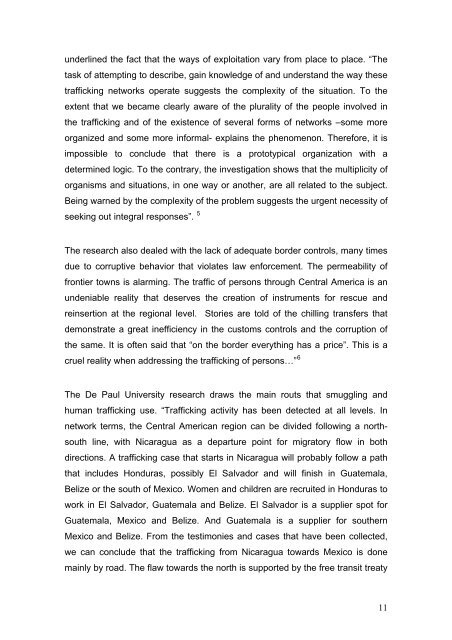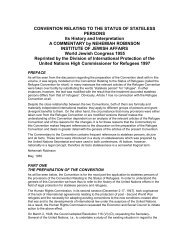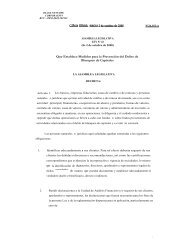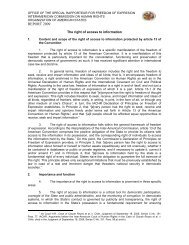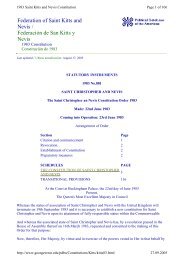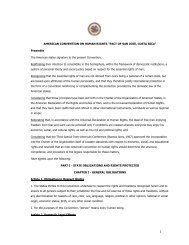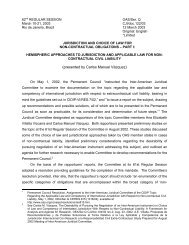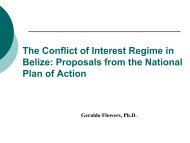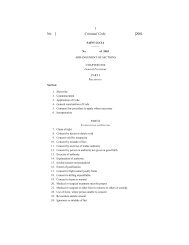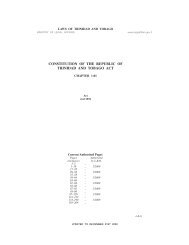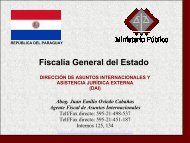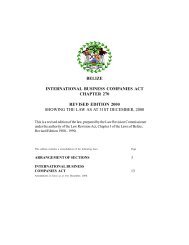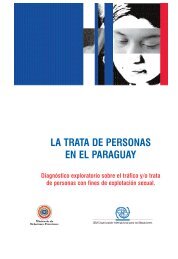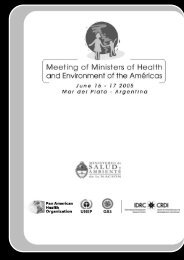TRAFFICKING OF PERSONS IN BELIZE - OAS
TRAFFICKING OF PERSONS IN BELIZE - OAS
TRAFFICKING OF PERSONS IN BELIZE - OAS
Create successful ePaper yourself
Turn your PDF publications into a flip-book with our unique Google optimized e-Paper software.
underlined the fact that the ways of exploitation vary from place to place. “The<br />
task of attempting to describe, gain knowledge of and understand the way these<br />
trafficking networks operate suggests the complexity of the situation. To the<br />
extent that we became clearly aware of the plurality of the people involved in<br />
the trafficking and of the existence of several forms of networks –some more<br />
organized and some more informal- explains the phenomenon. Therefore, it is<br />
impossible to conclude that there is a prototypical organization with a<br />
determined logic. To the contrary, the investigation shows that the multiplicity of<br />
organisms and situations, in one way or another, are all related to the subject.<br />
Being warned by the complexity of the problem suggests the urgent necessity of<br />
seeking out integral responses”. 5<br />
The research also dealed with the lack of adequate border controls, many times<br />
due to corruptive behavior that violates law enforcement. The permeability of<br />
frontier towns is alarming. The traffic of persons through Central America is an<br />
undeniable reality that deserves the creation of instruments for rescue and<br />
reinsertion at the regional level. Stories are told of the chilling transfers that<br />
demonstrate a great inefficiency in the customs controls and the corruption of<br />
the same. It is often said that “on the border everything has a price”. This is a<br />
cruel reality when addressing the trafficking of persons…” 6<br />
The De Paul University research draws the main routs that smuggling and<br />
human trafficking use. “Trafficking activity has been detected at all levels. In<br />
network terms, the Central American region can be divided following a northsouth<br />
line, with Nicaragua as a departure point for migratory flow in both<br />
directions. A trafficking case that starts in Nicaragua will probably follow a path<br />
that includes Honduras, possibly El Salvador and will finish in Guatemala,<br />
Belize or the south of Mexico. Women and children are recruited in Honduras to<br />
work in El Salvador, Guatemala and Belize. El Salvador is a supplier spot for<br />
Guatemala, Mexico and Belize. And Guatemala is a supplier for southern<br />
Mexico and Belize. From the testimonies and cases that have been collected,<br />
we can conclude that the trafficking from Nicaragua towards Mexico is done<br />
mainly by road. The flaw towards the north is supported by the free transit treaty<br />
11


